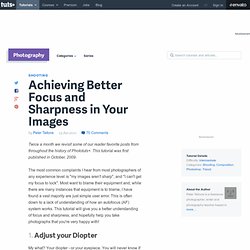

jeannine hellemans
How to Make a Mind. Can nonbiological brains have real minds of their own?

In this article, drawn from his latest book, futurist/inventor Ray Kurzweil describes the future of intelligence—artificial and otherwise. The mammalian brain has a distinct aptitude not found in any other class of animal. We are capable of hierarchical thinking, of understanding a structure composed of diverse elements arranged in a pattern, representing that arrangement with a symbol, and then using that symbol as an element in a yet more elaborate configuration.
This capability takes place in a brain structure called the neocortex, which in humans has achieved a threshold of sophistication and capacity such that we are able to call these patterns ideas. We are capable of building ideas that are ever more complex. We are now in a position to speed up the learning process by a factor of thousands or millions once again by migrating from biological to nonbiological intelligence.
Consider the benefits. One limitation of the Jeopardy! Ray Kurzweil. Raymond "Ray" Kurzweil (/ˈkɜrzwaɪl/ KURZ-wyl; born February 12, 1948) is an American author, computer scientist, inventor, futurist, and is a director of engineering at Google.

Aside from futurology, he is involved in fields such as optical character recognition (OCR), text-to-speech synthesis, speech recognition technology, and electronic keyboard instruments. He has written books on health, artificial intelligence (AI), transhumanism, the technological singularity, and futurism. Kurzweil is a public advocate for the futurist and transhumanist movements, as has been displayed in his vast collection of public talks, wherein he has shared his primarily optimistic outlooks on life extension technologies and the future of nanotechnology, robotics, and biotechnology. Life, inventions, and business career[edit] Early life[edit] Ray Kurzweil grew up in the New York City borough of Queens. Kurzweil attended Martin Van Buren High School. Mid-life[edit] Later life[edit] Personal life[edit] Learn to draw. Don't Zoom, Move: Treating Your Zoom Lens as a Series of Primes.
We’ve shared some funny pictures in the past that illustrate how distance, not focal length, changes perspective — but nothing beats a video walk through.

So, in this short video, photographer Mike Browne explains why you should treat your zoom lens as a series of prime lenses, and not the equivalent of getting physically closer to your subject. Here are the final shots, one focal length at a time: Each shot is framed identically using the lens’ focal length, but because the photographer had to move away to properly frame the shot at any given focal length, the perspective still changed. It’s a simple concept, but even if you’ve heard it explained a million times, you should really give it a try yourself. So, if the video, the pictures, and the fat cat don’t offer sufficient explanation — or even if they do — grab your camera and a willing subject (we find inanimate subjects rarely object to being photographed) and give this experiment a shot. (via Reddit) Achieving Better Focus and Sharpness in Your Images. Twice a month we revisit some of our reader favorite posts from throughout the history of Phototuts+.

This tutorial was first published in October, 2009. The most common complaints I hear from most photographers of any experience level is "my images aren't sharp", and "I can't get my focus to lock". Most want to blame their equipment and, while there are many instances that equipment is to blame, I have found a vast majority are just simple user error. This is often down to a lack of understanding of how an autofocus (AF) system works. This tutorial will give you a better understanding of focus and sharpness, and hopefully help you take photographs that you're very happy with! 1. My what? MCP Photoshop Actions and Tutorials Blog for Photographers. You are here: Blog Home » Guest Bloggers » How to Use Panning to Make Your Photography Come Alive How to Use Panning to Make Your Photography Come Alive As photographers, we are always looks for new techniques to improve our work and make our images stand out.

As I was starting out in photography this often lead me to additional purchases of lenses, software and accessories. But there is something you can do to add the WOW factor to your photos without a trip to the camera shop – panning. It allows you to isolate and focus a moving object while blurring the background. Have a look at this cyclist I shot at 1/350 of a second as he raced by me at 20mph.
Now let’s look at another cyclist in the same location that I captured while panning him as he raced by. Many people are intimidated by panning but it is a relatively easy technique to master. How to do panning… Digital Photography Tips: Digital Photography School. Meteors, Comets & Asteroids. Digital Learning Center. Origami.
TED Education Talks.
Pearltrees tips.